How to Play: Rubin Tempo
Look, I’m not here to call anyone out or to… No, you know what?
My name is Jordan “WhatAmI” Abronson and I am here today to tell you and you personally that you are playing Aphelios wrong.
Moon boy might be powerful, but he sure as Noxus isn’t easy, so let’s get into how to run him right.
To see how the LoR community is building Aphelios, head to our Deck Library.

Deck Code: CEBQGAYJJFQNSAIBAMCAKAQBAQTTIBIEAMESGVCWLQAQIBAQAEAQIJQBAMCAWAQCAQAQQBABAECBWAIDBEEQCBIEDAAQIBAD
[See Rubin Tempo deck details]
Rubin Tempo
Ok, the very first and most important thing to focus on is the second word in that title. I know it’s hiding behind the first one and it’s easy to lose focus because we all love our benevolent game designer, but I promise it’s important. Tempo. When you are playing Aphelios you are a tempo deck.
We’ll talk about the correct ways to play each phase of the game as we always do, but the thing that causes the most misplays with this deck is a fundamental failure to correctly categorize. We’re not a control deck. We have lots of controlling elements, but our job is not to stall out and eventually win the game
Our job is to kill people. The reason this miscategorization happens is primarily because of how powerful Aphelios is. Yes, you’re right, if he goes un-answered he will eventually mop up most board states all on his own. There are even some matchups that are correct to play in that manner.
But most of the time? Like, way, way more often than I see people generally doing? Getting one to two guns that impact the board and a three-mana 3|3 body is plenty. If I’m missing damage to protect a champion that is likely to die to one of my opponent’s answers late anyway? I’m playing Aphelios wrong.
Phase One: Chipping In
We’ve got six one drops and eight two drops in this deck. What that means is that unless we are playing against an honest to goodness aggro deck, we are going to start each game by looking to get in early damage.
Don’t disparage those one, two, or even three-point chunks that your little beaters can get in. A surprising number of games will come down to slim margins and looking to burn out our opponent. If you don’t look for every point then you’ll be kicking yourself when that last Mystic Shot leaves your opponent still moving.
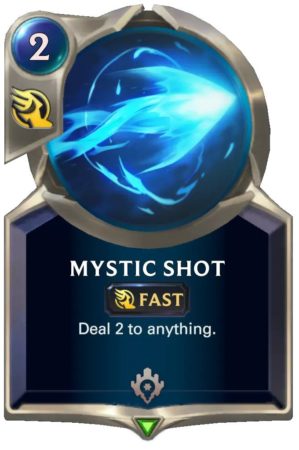
This is also where we need to be planning out our mana for the next phase. This deck is exceedingly mana hungry even when Aphelios is not around, and when he is the effect is only magnified. Even at two mana guns will eat up your available resources like nothing else.
Every time you’re going to cast an Ignition you need to be asking “Do I have enough mana to do what I need to do over the next couple of turns?” If the answer is yes, then fire away. If you’re not sure, then maybe hold steady and think about the shot you’ll want to take next round.
Phase Two: Tempo Versus Value
One of my favorite types of board games to play are timed economy games. This is because you are tested on your ability to predict when and how the game will end by at first building up a long-term plan, and then knowing when to sacrifice everything for every last point. In common parlance, to go all in.
That is exactly how this deck functions. At the start, you will have a bunch of units that generate value. The trick is asking how we can turn that value into usable, game-ending damage. Generally, the answer is to try to make large boards ourselves while limiting our opponent’s development.
However, there are a lot of other workarounds possible. Trickster, Golden Sisters, Subpursssible, or any number of hits off of Starshaping can elusively push through damage. Also, look for opportunities when you think your opponent can’t answer it to have Infernum off of Aphelios through down massive haymakers.


Phase Three: Burn Them Out
Note that I didn’t say outvalue them. I didn’t say hang out and hope that Starshaping or a leveled-up Champion does your job for you. I said burn them out. Something like ninety percent of victories with this deck will come from the game ending with a barrage of burn pointed directly at your opponent’s face.
The other small percentage points I hesitate to even mention because, as I’ve said, I think many of the misplays with this deck come from not realizing you’re a burn deck. Please note, I point these other lines out more for completeness’s sake than as a default end state.
Leveled Aphelios will occasionally just outvalue an opponent, and it is important to keep your eyes open for opportunities for this to happen. Infernum on Vi is a good way to push enough damage to end the game on the spot, and can occasionally cause turn six victories, which is always a good time.
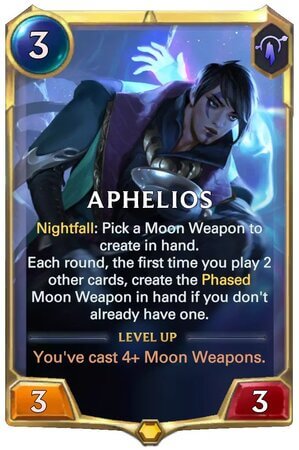
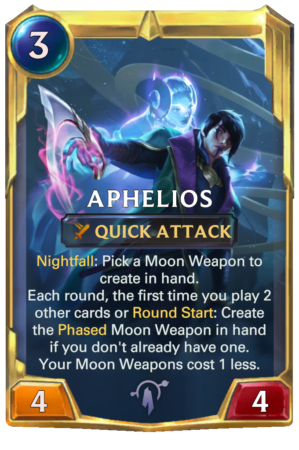
Last but not least, Starshaping is still a mighty powerful card and earns its slots in the deck. If your opponent matches your pressure through the mid game almost any of the unit hits off of this spell can send them packing.
I’ll note that I take Scourge more with this deck than with any other Starshaping deck I have played simply because you have often forced out enough answers early that it has a high chance to shut down a game. The Spell-Shielded lower-cost units are still the default picks though.
Key Choices
Where are Hush and Sunburst? They’ve toddled on off to the place where all the other irrelevant cards make their homes after being replaced with more burn spells and aggressive early units. If you’re asking this question, you are still failing to fundamentally grasp the plan of this deck.
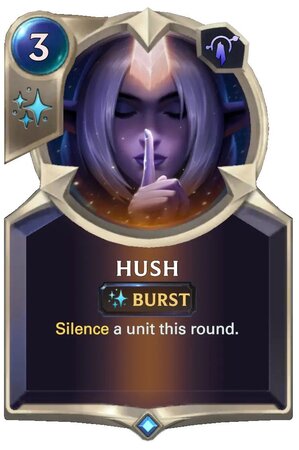
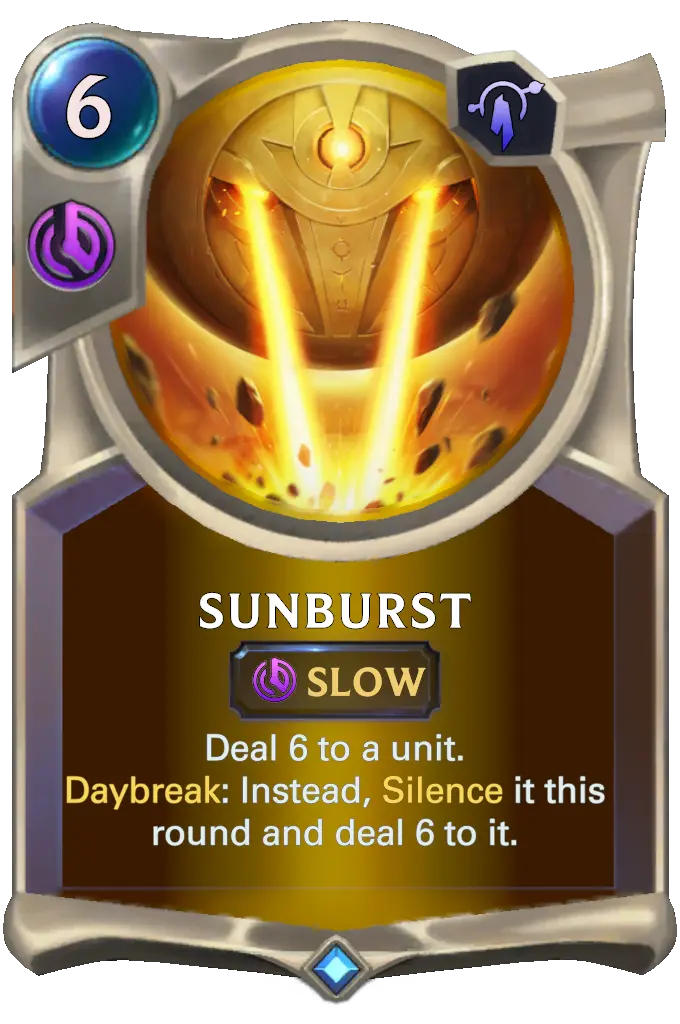
Hush, Sunburst, and other cards that fit into those sorts of slots are amazing control tools. I enjoy playing them when I am playing a control deck. This is not a control deck. Far too many games are ended staring at a Hush or Sunburst that never saw the light of day and didn’t help the game plan, so off they go.
Does this mean we give up percentage points against decks like Pantheon and Viktor? Yes, but that’s ok. One of the things that people often fail at when deck building is that they try to be good against everything.
Newsflash, this will never, ever happen. Or, more accurately, when it does, Ahri/Kennen will get nerfed into the ground as it deserves. Or Twisted Fate Fizz, or Azir/Irelia, or, well, you get it.
Instead, when you are making a deck, focus on increasing your percentage points either across the board, or as much as possible in the small range of matchups you are targeting. This is a Jack of All Trades deck, so we want to lean into our own plan as much as possible to power up across the board. Thus the burn.
Conclusion
This deck has been my primary ladder-climbing tool this season. It has had my back through Sun Discs, Burn Decks, and all manner of crazy ladder trash that has come down on me. I think it is a very powerful, possibly even tier one deck, but only if you play it like a tempo deck.
Think of it as a tool. If I take a drill and beat the ever-loving snot out of a nail, all that is going to happen is that my drill will break. If you want a hammer, go play Feel the Rush. But if you’re down to burn some fools, while retaining a powerful endgame fallback plan, this might be the deck for you.
If you have any questions, feel free to ask WhatAmI during his streams (Tuesday-Thursday around 3PM PST and weekends for tournaments).
WhatAmI streams at twitch.tv/xxwhatamixx Tuesday-Thursday
Subscribe to our newsletter:
Don’t miss out on all of the latest LoR content!
 Download APP
Download APP